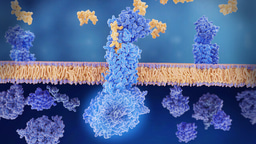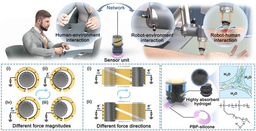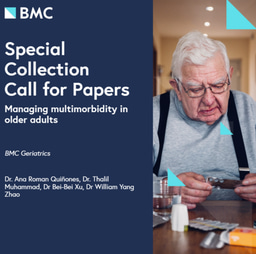Rethinking Cannabis Use Disorder: A Harm Reduction Approach for Medical Patients
Published in Research Data
As a cannabis epidemiologist with 15 years of experience studying cannabis—and as a medical cannabis patient myself—I’ve spent a lot of time thinking about how science assesses and labels cannabis use. For medical patients, cannabis often replaces more harmful medications, reduces pain, and improves quality of life.1,2 It is also one of the few treatments shown to have a wide range of therapeutic effects, reducing the prescription cascade and polypharmacy often seen in individuals with comorbid conditions.3,4 Yet, when we use cannabis daily to manage symptoms, we’re at risk of being labeled with Cannabis Use Disorder (CUD)5—a term that is deeply discriminatory when applied to legitimate medical use.
Why is it that patients who take prednisone, insulin, antidepressants, statins, glucagon-like peptide-1s and myriad other medication daily or regularly to manage chronic conditions don’t face the same scrutiny? They depend on those medications to function and live more normally and require continuous chronic use for their condition. And withdrawal, if possible, makes symptoms worse. Even after decades of experience, these "side effects" are rarely discussed as they are greatly outweighed by overall benefits. Medical cannabis users like myself similarly depend on cannabis for improved quality of life. This double standard reflects a lingering stigma around cannabis that is overdue for change. Even when reviewing the literature on cannabis, and examining NIH funding priorities for research on cannabis, the overwhelming priority is on CUD.
Daily Use Isn’t a Disorder
One of the criteria for Cannabis Use Disorder in the DSM-5 (the diagnostic manual for mental health conditions) is using cannabis in larger amounts or over a longer period than intended.6 But for medical patients, daily use is often prescribed or self-administered—just like any other medication. The goal isn’t recreational enjoyment but relief from debilitating symptoms. We need to rethink how the applicability of the symptoms of CUD as defined by the DSM-5 relate to medical cannabis users and the possibility that “these criteria may not be the most suitable assessment of potential medical cannabis dependence.”7
Take my own case as an example: I use medical cannabis to manage complex health issues that have not adequately responded to traditional pharmaceuticals. Cannabis allows me to function at a high level enabling me to work, conduct research, and live my life somewhat normally. And yet, my daily cannabis use might qualify as "disordered" under the current DSM diagnostic framework, while my daily use of Celebrex for joint pain does not; Celebrex Use Disorder just sounds ridiculous.
That inconsistency isn’t just frustrating; it’s harmful. It pathologizes legitimate and effective medical treatment and could consequently discourage patients from accessing a treatment that could improve their illness and quality of life.
A Harm Reduction Approach to Medical Cannabis
Instead of labeling medical cannabis use as disordered due to frequency of use or tolerance, we should evaluate it through a harm reduction lens—one that prioritizes minimizing risks while maximizing benefits. Harm reduction focuses on outcomes: does cannabis improve the patient’s ability to function, fulfill their roles, and enhance their quality of life? For most medical users, the answer is yes.8–10
Harm Reduction in Practice
- Tailored Dosing: Patients can collaborate with healthcare providers to determine the right dosage, frequency, and strain to meet their unique needs while minimizing risks.
- CBD Emphasis: Using cannabidiol (CBD)-dominant strains or formulations with low tetrahydrocannabinol (THC) can reduce psychoactive effects while maintaining therapeutic benefits.
- Education: Patients should be informed about potential interactions, side effects, and safe usage practices.
Rather than stigmatizing tolerance or dose escalation, we should view these as normal physiological responses in a therapeutic context, like those seen with opioids, antidepressants, or insulin.
This approach also acknowledges individual needs. Some patients may require higher doses or more frequent use based on their condition or their genetics (yes, your genes play a significant role in how you respond to cannabis), just as with other medications. Rather than stigmatizing tolerance or dose escalation, we should view these as normal physiological responses in a therapeutic context.
Harm reduction doesn’t ignore risks; instead, it emphasizes education and safety. For example, patients can work with healthcare providers to use cannabis in ways that minimize side effects, avoid negative interactions, and optimize symptom control. This perspective balances safety with patient autonomy and respects cannabis as a legitimate medicine.
Recognizing the Limits of Medical Cannabis
While cannabis has considerable therapeutic potential, it’s not a panacea. Many of us—myself included—still rely on traditional medicines to manage complex health conditions. For many, cannabis works best as an adjunct therapy, complementing other treatments and, in some cases, reducing reliance on more harmful medications, such as opioids.
For some individuals, however, cannabis use can pose risks that outweigh its benefits:
-
Psychosis and Mental Health Conditions:
Cannabis, particularly THC-rich strains, can exacerbate psychosis or increase the risk of developing psychotic symptoms. This is especially true for individuals with a diagnosis of psychosis, schizophrenia, or a family history of psychotic disorders. THC interacts with brain pathways that can heighten vulnerability in those already predisposed. For such individuals, avoiding cannabis—or opting for formulations with high CBD and minimal THC—may be safer.11 -
Substance Use Disorders:
People with active or remitting substance use disorders should approach cannabis cautiously.12 While some may find it helpful for harm reduction (e.g., as a substitute for opioids),13 others may be at risk of developing problematic use patterns. Close monitoring and guidance from healthcare providers are essential in these cases. -
Children and Adolescents:
Routine cannabis use is not recommended for children or adolescents except in specific medical contexts, such as treatment-resistant epilepsy.14 Early exposure to THC can interfere with brain development and potentially increase the risk of mental health challenges later in life.15 Adults should use cannabis responsibly and avoid exposing children to its effects. - Pregnancy:
Cannabis use during pregnancy is a complex and controversial topic.16 While some pregnant individuals may consider cannabis to alleviate nausea, vomiting, or anxiety, research indicates potential risks to fetal development. Studies suggest that cannabis use during pregnancy, particularly THC exposure, may impact brain development, leading to long-term effects on cognition, behavior, and attention in children. Pregnant individuals experiencing severe symptoms like hyperemesis gravidarum should consult their healthcare provider to explore safer, evidence-based alternatives.17,18
Addressing Common Counterarguments Against Cannabis as Medicine
-
“Frequent cannabis use increases the risk of dependence, regardless of intent.”
Dependence is a normal response to consistent use of any medication, whether it’s cannabis, statins, insulin, or antidepressants. The key is whether the use is therapeutic and improves the patient’s quality of life. For many medical cannabis users, this is the case.19–21 -
“Medical cannabis users might still develop Cannabis Use Disorder (CUD).”
Yes medical cannabis users are at higher risk for CUD under its current definition. For those at higher risk (e.g., with substance use disorders or mental health vulnerabilities), a personalized harm reduction approach can help ensure cannabis use is safe and effective.22 -
“Cannabis isn’t a ‘real’ medicine—it’s not FDA-approved for most conditions.”
Cannabis’ regulatory status is due to outdated policies which need to be revised, not lack of evidence. Studies increasingly show its efficacy for conditions like chronic pain, nausea, appetite, anxiety, seizure disorders.23–25 The FDA has approved Epidiolex, which contains a purified form of CBD for the treatment of seizures associated with Lennox-Gastaut syndrome or Dravet syndrome in patients 2 years of age and older. -
“Tolerance and dose escalation make cannabis a dangerous treatment.”
Tolerance is not unique to cannabis—it’s a normal response to many medications. Patients on opioids, benzodiazepines, or even insulin may require dose adjustments over time; personalized precision dosing is dependent on disease state and patient response.26 If adjustments are supervised and effective, they’re no more dangerous than changes in other treatments. -
“Cannabis is addictive and harmful, so it should be monitored closely.”
While any substance can be harmful if misused (remember when Tide pods were all the rage?), cannabis is far less addictive than opioids and many other commonly prescribed medications.27,28 For medical users, cannabis often replaces more harmful drugs, reducing overall risk. Careful monitoring is still essential for vulnerable populations to maximize benefits while minimizing risks.
A New Way to Frame Medical Cannabis Use
It’s time to move beyond outdated stigmas and recognize medical cannabis for what it is: a legitimate medicine. Instead of pathologizing its use, we should focus on outcomes like improved functionality, decreasing reliance on riskier medications, reduced suffering, and enhanced quality of life.
By integrating a harm reduction approach into our evaluation of cannabis, we can ensure that patients are treated with the same respect as those using any other treatment. The way we label cannabis use has real consequences—it shapes perceptions, guides policy, and impacts access.
Let’s start treating medical cannabis like what it is: a tool for healing, not a cause for judgment.
Citations
- Katz-Talmor D, Katz I, Porat-Katz BS, Shoenfeld Y. Cannabinoids for the treatment of rheumatic diseases — where do we stand? Nat Rev Rheumatol. 2018;14(8):488-498.
- Karst M. Overview: Chronic Pain and Cannabis-Based Medicines. Pharmacopsychiatry. 2024;57(3):152-159.
- Yang KH, Kaufmann CN, Nafsu R, et al. Cannabis: An Emerging Treatment for Common Symptoms in Older Adults. J Am Geriatr Soc. 2021;69(1):91-97.
- Solmi M, De Toffol M, Kim JY, et al. Balancing risks and benefits of cannabis use: umbrella review of meta-analyses of randomised controlled trials and observational studies. BMJ. 2023;382:44.
- Han B, Compton WM, Einstein EB, Volkow ND. Medically Recommended vs Nonmedical Cannabis Use Among US Adults. JAMA Psychiatry. January 2025.
- Narouze SN, Maccallum CA, de Freitas L. Cannabis Use Disorder. Cannabinoids Pain. March 2024:313-316.
- Schlag AK, Hindocha C, Zafar R, Nutt DJ, Curran HV. Cannabis based medicines and cannabis dependence: A critical review of issues and evidence. https://doi.org/101177/0269881120986393. 2021;35(7):773-785.
- Kerlin AM, Long M, Kappelman M, Martin C, Sandler RS. Profiles of Patients Who Use Marijuana for Inflammatory Bowel Disease. Dig Dis Sci. 2018;63(6):1600-1604.
- Sarzi-Puttini P, Batticciotto A, Atzeni F, et al. Medical cannabis and cannabinoids in rheumatology: where are we now? Expert Rev Clin Immunol. 2019;15(10):1019-1032.
- Stanciu CN, Brunette MF, Teja N, Budney AJ. Evidence for Use of Cannabinoids in Mood Disorders, Anxiety Disorders, and PTSD: A Systematic Review. Psychiatr Serv. 2021;72(4):429-436.
- Johnson K, Weldon AJ, Burmeister MA. Differential effects of cannabis constituents on schizophrenia-related psychosis: a rationale for incorporating cannabidiol into a schizophrenia therapeutic regimen. Front Psychiatry. 2024;15:1386263.
- Choi NG, Moore J, Choi BY. Cannabis use disorder and substance use treatment among U.S. adults. J Subst Use Addict Treat. 2024;167:209486.
- Ganesh SS, Gould EE, Conner BT, Huh J, Ceasar RC, Bluthenthal RN. “Smoking weed it gets you over the hump”: Cannabis co-use as a facilitator of decreased opioid use among people who inject drugs in Los Angeles, California. Drug Alcohol Depend Reports. 2024;12:100257.
- Talwar A, Estes E, Aparasu R, Reddy DS. Clinical efficacy and safety of cannabidiol for pediatric refractory epilepsy indications: A systematic review and meta-analysis. Exp Neurol. 2023;359:114238.
- Ross JA, Levy S. The Impact of Cannabis Use on Adolescent Neurodevelopment and Clinical Outcomes Amidst Changing State Policies. Clin Ther. 2023;45(6):535-540.
- Renard J, Konefal S. Key Points Clearing the Smoke on Cannabis Cannabis Use During Pregnancy and Breastfeeding-An Update.
- Dodge P, Nadolski K, Kopkau H, Zablocki V, Forrestal K, Bailey BA. The impact of timing of in utero marijuana exposure on fetal growth. Front Pediatr. 2023;11:582.
- Manthey J, Freeman TP, Kilian C, López-Pelayo H, Rehm J. Public health monitoring of cannabis use in Europe: prevalence of use, cannabis potency, and treatment rates. Lancet Reg Heal - Eur. 2021;10:100227.
- Arkell TR, Downey LA, Hayley AC, Roth S. Assessment of Medical Cannabis and Health-Related Quality of Life. JAMA Netw Open. 2023;6(5):e2312522.
- Lent MR, McCalmont TR, Short MM, Dugosh KL. Changes in health-related quality of life over the first three months of medical marijuana use. J Cannabis Res. 2024;6(1):1-8.
- Mücke M, Phillips T, Radbruch L, Petzke F, Häuser W. Cannabis-based medicines for chronic neuropathic pain in adults. Cochrane Database Syst Rev. 2018;2018(3).
- Wolfe D, Corace K, Butler C, et al. Impacts of medical and non-medical cannabis on the health of older adults: Findings from a scoping review of the literature. PLoS One. 2023;18(2).
- Devinsky O, Jones NA, Cunningham MO, Jayasekera BAP, Whalley BJ, Devore S. Cannabunoid Treatments in Epilepsy and Seizure Disorders. Physiol Rev. 2024;104(2):591-649.
- Zeiger JS, Silvers WS, Fleegler EM, Zeiger RS. Cannabis use for pain in a large population-based survey of adult athletes. In: Institute of Cannabis Research. Pueblo; 2019:Abstract 5C.
- National Academies of Sciences E and MH and MDB on PH and PHPC on the HE of MAER and RA. Chapter 4: Therapeutic Effects of Cannabis and Cannabinoids. In: The Health Effects of Cannabis and Cannabinoids: The Current State of Evidence and Recommendations for Research. Vol Jan 12. ; 2017:85-140.
- Tyson RJ, Park CC, Powell JR, et al. Precision Dosing Priority Criteria: Drug, Disease, and Patient Population Variables. Front Pharmacol. 2020;11:511542.
- Lake S, Socías ME, Milloy MJ. Evidence shows that cannabis has fewer relative harms than opioids. C Can Med Assoc J. 2020;192(7):E166.
- Reiman A. Cannabis as a substitute for alcohol and other drugs. Harm Reduct J. 2009;6(1):1-5.




Please sign in or register for FREE
If you are a registered user on Research Communities by Springer Nature, please sign in